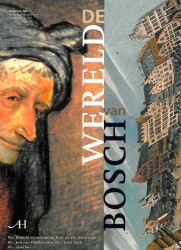Glaudemans 2001
“De stad van Jheronimus Bosch” (Ronald Glaudemans) 2001
[in: Jan van Oudheusden and Aart Vos (eds.), De Wereld van Bosch. Historisch ABC – Archeologie Bouwhistorie en Cultuur ’s-Hertogenbosch – volume 4, Adr.Heinen, ’s-Hertogenbosch, 2001, pp. 4-25]
Glaudemans reports some general facts about the history of ’s-Hertogenbosch (location, expansion, ramparts, streets, houses, churches), in particular concerning the Middle Ages. Occasionally he also refers to Bosch.
- Bosch’s house of birth was most likely situated where today the premises Market Place 29 are (although probably only the cellar goes back to Bosch’s age).
- Bosch must have been a close witness of the 1463 city fire. The house of his parents was spared, though. We know this because in 1463 Hieronymus’ father kept the wings of the Confraternity of Our Lady’s altarpiece in his workshop for maintenance and those wings have been preserved (as opposed to the altarpiece itself, which was in the house of a carver and was lost in the fire).
- In 1491 the Brotherhood of St Anthony completed a chapel at the end of the Hinthamerstraat.
- During Bosch’s lifetime the architects of St John’s were Alart Duhameel (who left for Louvain in 1494/95) and from 1495 on Jan Heyns (who died in 1516, as did Bosch). In 1508/09 Bosch and Heyns gave advice to the Confraternity of Our Lady regarding the painting in polychrome of an altarpiece devoted to Our Lady.
- Th chapel of the Confraternity of Our Lady (today called Chapel of the Blessed Sacrament) was built between 1479 and 1494. Bosch designed a stained-glass window, gave advice regarding the painting in polychrome of a new altarpiece devoted to Our Lady and later painted some wings for the same altarpiece.
- From 1481 till 1516 Bosch lived in a large stone house, called In den Salvatoer [The Saviour]. It was situated at the northern side of the Market Place. The side walls are largely of medieval origin and on one of these walls little fragments (unfortunately damaged beyond recognition) of a medieval fresco were found. Perhaps Bosch painted them.
Glaudemans does not tell anything new: every fact he mentions is already known. Nevertheless, in this text it has all been brought together in a nice way. One remark, though: the current premises Market Place 29 cannot have been Bosch’s house of birth, because this house was only bought by father Van Aken in 1462 (compare Van Dijck 2001b: 9).
[explicit]
